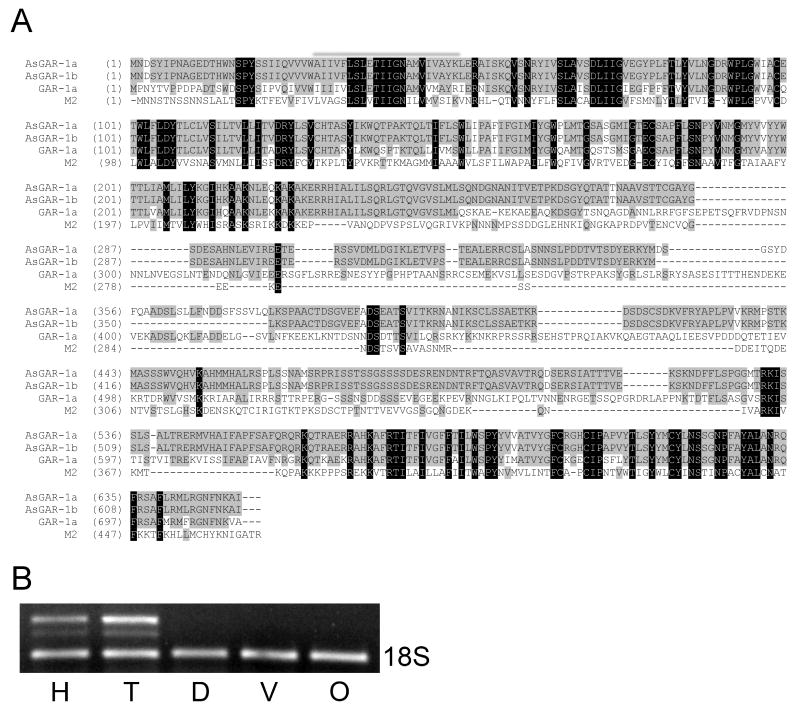Fig. 1.
A G protein-linked acetylcholine receptor (GAR), dubbed AsGAR-1, is expressed in the pig gastrointestinal roundworm, Ascaris suum. (A) AsGAR-1 has high homology with GAR-1, a Caenorhabditis elegans G protein-coupled ACh receptor. Alignment of the two AsGAR-1 isoforms, a and b, with C. elegans GAR-1 (Swiss-Prot ID Q18007) and the most closely related muscarinic receptor, M2 (Swiss-Prot ID P08172). The seven predicted transmembrane domains of AsGAR-1 are indicated with bars. A possible tyrosine phosphorylation site present in AsGAR-1a but not AsGAR-1b is marked (*). Shading indicates the degree of conservation. Alignment was constructed using the blosum62mt2 matrix and Vector NTI v10.3 software (Invitrogen). (B) AsGAR-1 is expressed in a tissue-specific manner. A multiplexed relative semi-quantitative reverse transcription (RT)-PCR reaction resulted in AsGAR-1a and b amplification from specific RNA preparations. AsGAR-1a (upper amplicon) and AsGAR-1b (middle amplicon) were observed in head (H) and tail (T) preparations but not in dorsal (D) or ventral (V) body wall muscle preparations or an ovijector preparation (O). 18S rRNA was used as our normalized internal standard (lower amplicon).

